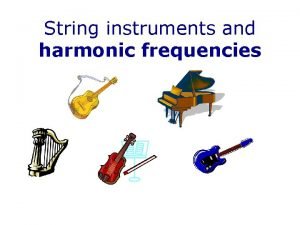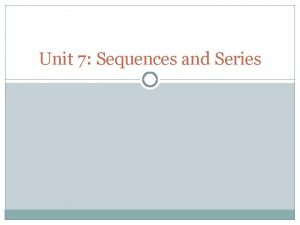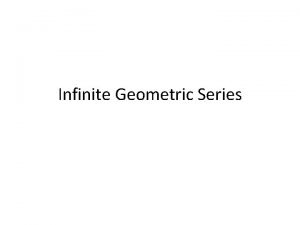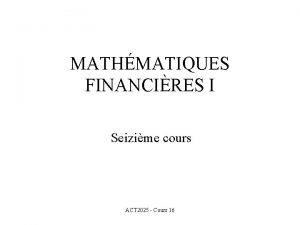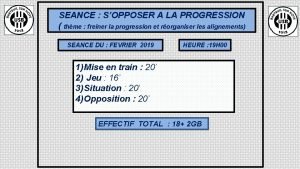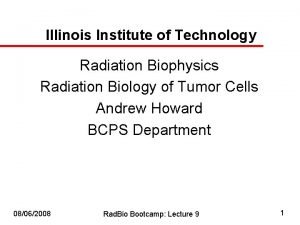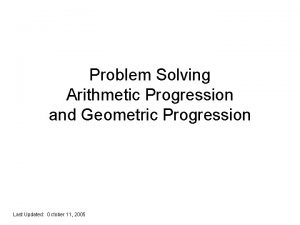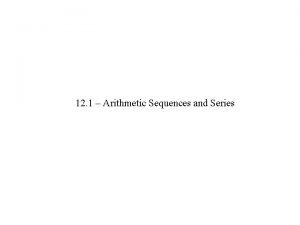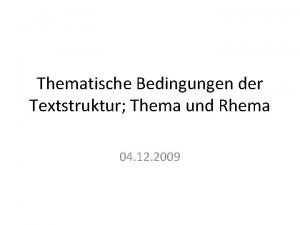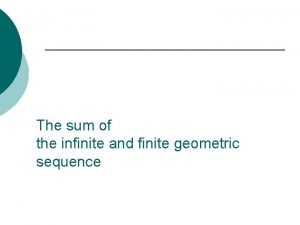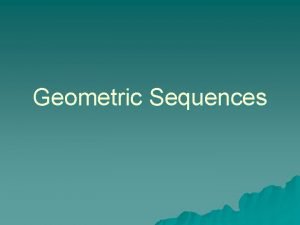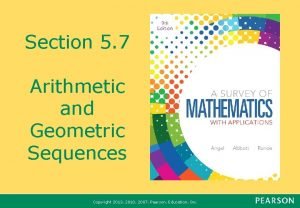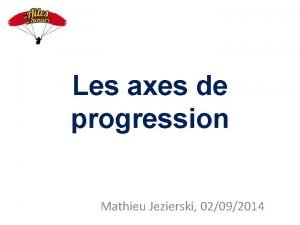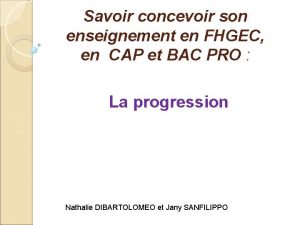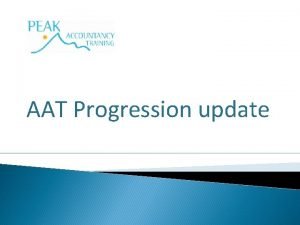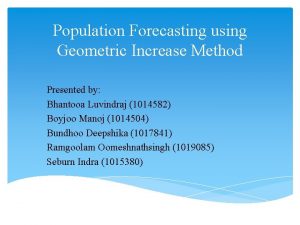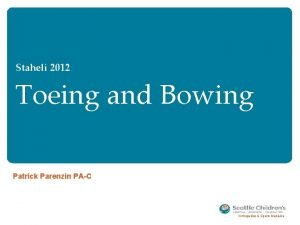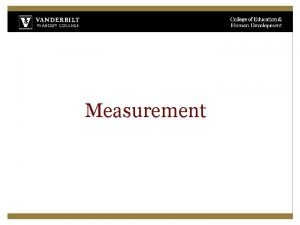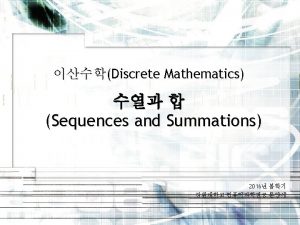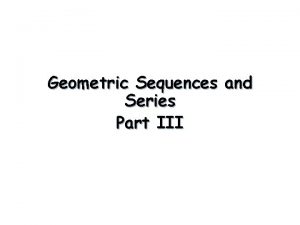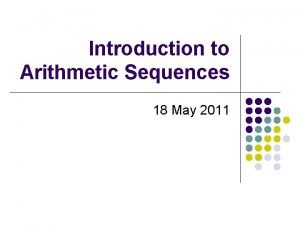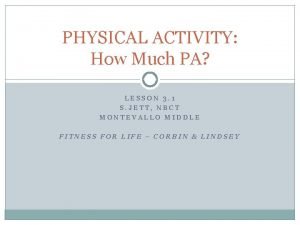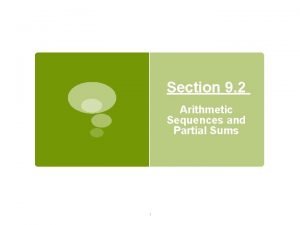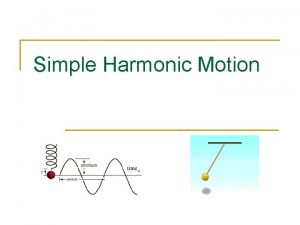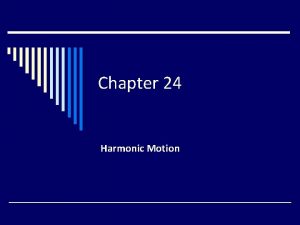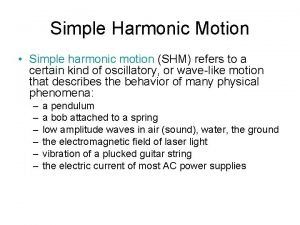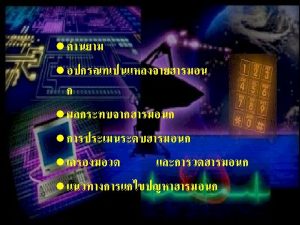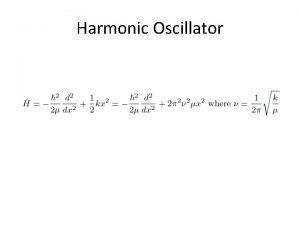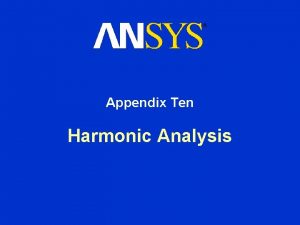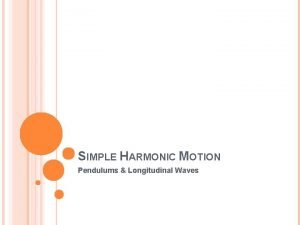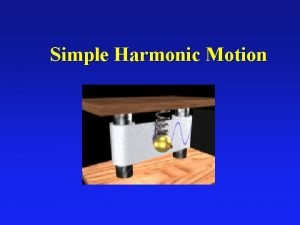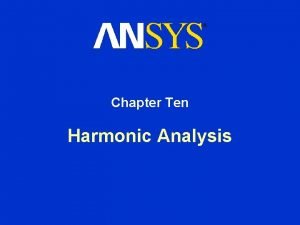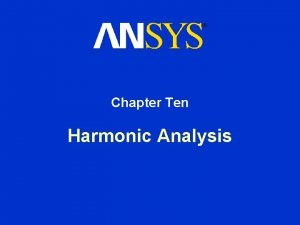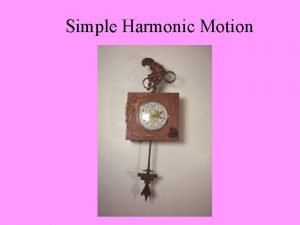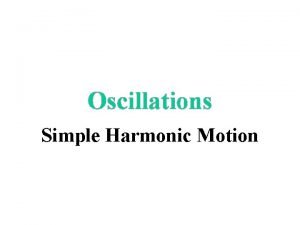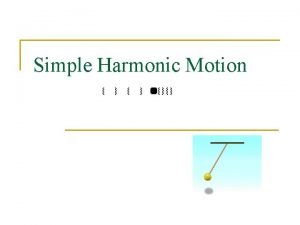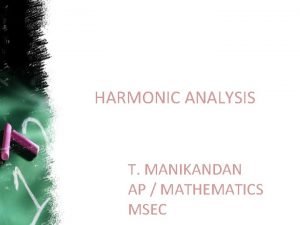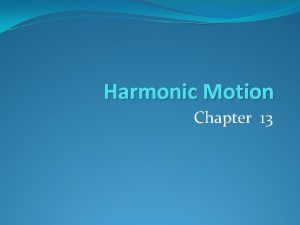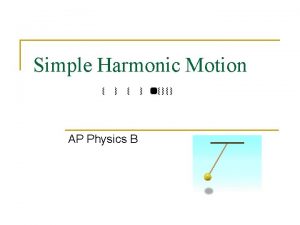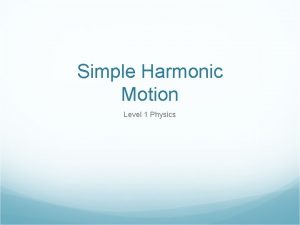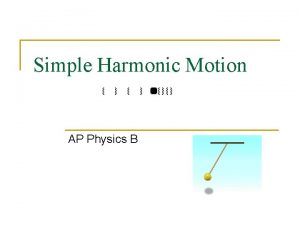HARMONIC PROGRESSION What is a Harmonic Progression A

























































- Slides: 57

HARMONIC PROGRESSION

What is a Harmonic Progression?

A Harmonic Progression is a sequence of quantities whose reciprocals form an arithmetic progression.

Note!

* The series formed by the reciprocals of the terms of a geometric series are also geometric series.

And

* There is no general method of finding the sum of a harmonic progression.

Example

The Sequence “s 1 , s 2 , … , sn” is a Harmonic Progression if “ 1/s 1 , 1/s 2 , … , 1/sn” forms an Arithmetic Progression.

Method For Re-checking a Harmonic Progression

A Harmonic Progression is a set of values that, once reciprocated, results to an Arithmetic Progression. To check , the reciprocated values must possess a rational common difference. Once this has been identified, we may say that the sequence is a Harmonic Progression.

Harmonic Means are the terms found in between two terms of a harmonic progression.

Problems

Determine which of the following are Harmonic Progressions.


Step 1: Reciprocate all the given terms. * The reciprocals are: 1 , 2 , 3 , 4 , … Step 2: Identify whether the reciprocated sequence is an Arithmetic Progression by checking if a common difference exists in the terms.

Answer: It is a Harmonic Progression.


Step 1: Reciprocate all the given terms. * The reciprocals are: 1 , 4 , 5 , 7 , … Step 2: Identify whether the reciprocated sequence is an Arithmetic Progression by checking if a common difference exists in the terms.

Answer: It is NOT a Harmonic Progression.

Determine the next three terms of each of the following Harmonic Progressions.


Solution: 24 , 12 , 8 , 6 , … = 1/24 , 1/12 , 1/8 , 1/6 * To find the common difference: 1/12 – 1/24 = 2/24 – 1/24 = 1/24

Note!

You can subtract the second term to the first term, the third to the second term, the forth to the third term, and so on and so forth.

To get the next three terms: 5 th Term = 1/6 + 1/24 = 4/24 + 1/24 = 5/24 * Reciprocate = 24/5

th 6 Term = 5/24 + 1/24 = 6/24 = 1/4 * Reciprocate = 4

th 7 Term = 1/4 + 1/24 = 6/24 + 1/24 = 7/24 * Reciprocate = 24/7

Find the Harmonic Mean between the following terms.

1) 12 and 8

Step 1: Reciprocate all the given terms. * The reciprocals are: 1/12 and 1/8 Step 2: Arrange the given terms as follows:

1/12 Harmonic Mean 1’st term 2’nd term 1/8 3’rd term

*For this problem, we will use the formula: tn = t 1 + (n – 1)d

We may now substitute the values in the problem to the formula to find the common difference (d) and the Harmonic Mean as follows:

t 3 = t 1 + (3 - 1)d 1/8 = 1/12 + 2 d 1/8 – 1/12 = 2 d (3 – 2) / 24 = 2 d (3 – 2) = 48 d 1 = 48 d d = 1/48

*After getting the Common Difference, add it to the first term to get the Harmonic Mean between the two terms.

t 2 = t 1 + d = 1/12 + 1/48 = (4 + 1) / 48 = 5/48 *Reciprocate = 48/5

Insert three Harmonic Means between the following terms:

1) 36 and 36/5

Step 1: Reciprocate all the given terms. * The reciprocals are: 1/36 and 5/36 Step 2: Arrange the given terms as follows:

1/36 1’st term Harmonic Means 2’nd , 3’rd , and 4’th term 5/36 5’th term

*For this problem, we will use the formula: tn = t 1 + (n – 1)d

We may now substitute the values in the problem to the formula to find the common difference (d) and the Harmonic Means as follows:

t 5 = t 1 + (5 - 1)d 5/36 = 1/36 + 4 d 5/36 – 1/36 = 4 d (5 - 1) / 36 = 4 d (5 - 1) = 144 d 4 = 144 d d = 4/144 = 1/36

*After getting the Common Difference, add it to the first term, then add it to the second term, and then add it to the third term to get the Harmonic Means between the two terms.

t 2 = t 1 + d = 1/36 + 1/36 = 2/36 = 1/18 *Reciprocate = 18

t 3 = t 2 + d = 2/36 + 1/36 = 3/36 = 1/12 *Reciprocate = 12

t 4 = t 3 + d = 3/36 + 1/36 = 4/36 = 1/9 *Reciprocate = 9

Therefore, the three means between 36 and 36/5 are 18, 12, and 9.

Activity

Determine if the following are harmonic progressions or not: 1) 1/12 , 1/24 , 1/36 2) 2 , 5 , 7 , 8 3)1/5 , 1/10 , 1/15

Find the next three terms in the following harmonic progressions: 1) 1/2 , 1/5 , 1/8 , 1/11 , … 2) 19 , 17 , 15 , 13, … 3) 12 , 6 , 4 , 3 , …

Find the harmonic mean between: 1) 1/2 and 1/5 2) 1 and 1/9

Insert three harmonic means between: 1) 1/2 and 1/8 2) 1 and 1/10

Homework

Jo. Ke Lan. G! a. Ka. La n. Yo h. A! (Cor. Ny d. B? )

Prepared by: THE THREE MUSKETEERS a. k. a. Lucas Ferrer Paul Steven Santos and Earl Jeremy Buera
 Harmonic sequence formula
Harmonic sequence formula First harmonic and second harmonic
First harmonic and second harmonic Geometric series formula
Geometric series formula Fibonacci sequence examples with answer
Fibonacci sequence examples with answer Geometric series converge or diverge
Geometric series converge or diverge Annuité en progression géométrique
Annuité en progression géométrique S'opposer à la progression
S'opposer à la progression Numeracy continuum qld
Numeracy continuum qld Lht blois
Lht blois Line of progression
Line of progression Construire une progression pédagogique
Construire une progression pédagogique Initiation promotion progression
Initiation promotion progression Salary structure design
Salary structure design Tn=sn-sn-1
Tn=sn-sn-1 Reading skills progression chart
Reading skills progression chart Sum of infinite arithmetic sequence
Sum of infinite arithmetic sequence Thematische progression
Thematische progression Finite geometric sequence
Finite geometric sequence Vertical progression
Vertical progression Thank you and godbless image
Thank you and godbless image Literacy learning progressions
Literacy learning progressions Rangement lspcc
Rangement lspcc Franksbridge primary school
Franksbridge primary school Geometric progression
Geometric progression Cancer progression
Cancer progression Formula of nth term of geometric sequence
Formula of nth term of geometric sequence Les axes de progression
Les axes de progression Progression annuelle français cap
Progression annuelle français cap Men's 100m swim record
Men's 100m swim record Vcmna
Vcmna Progression pe
Progression pe Aat progression
Aat progression Progression of job withdrawal theory
Progression of job withdrawal theory Asthma index
Asthma index Investment banks
Investment banks Navy supply officer career path
Navy supply officer career path Youth engagement and progression framework
Youth engagement and progression framework Geometric increase method of population forecasting
Geometric increase method of population forecasting Foot progression angle
Foot progression angle Difference between progress and progression
Difference between progress and progression Bts fed option dbc
Bts fed option dbc Antigone travaux encadrés
Antigone travaux encadrés Victorian curriculum digital technologies
Victorian curriculum digital technologies Sum of geometric progression
Sum of geometric progression Principle of training variation
Principle of training variation Cancer progression
Cancer progression Dating god's way
Dating god's way Logical progression definition
Logical progression definition Pédagogie spiralaire
Pédagogie spiralaire Systems analyst career progression
Systems analyst career progression Eal victorian curriculum
Eal victorian curriculum Rwi colour progression
Rwi colour progression Sum of gp
Sum of gp Sum of arithmetic sequence formula
Sum of arithmetic sequence formula Geometric progression in gearbox
Geometric progression in gearbox Arithmetic series
Arithmetic series The principle of progression states that
The principle of progression states that Arithmetic sequence sum formula
Arithmetic sequence sum formula

